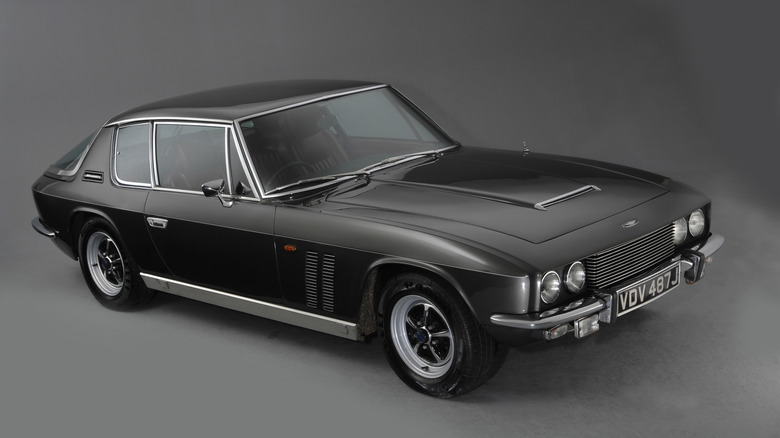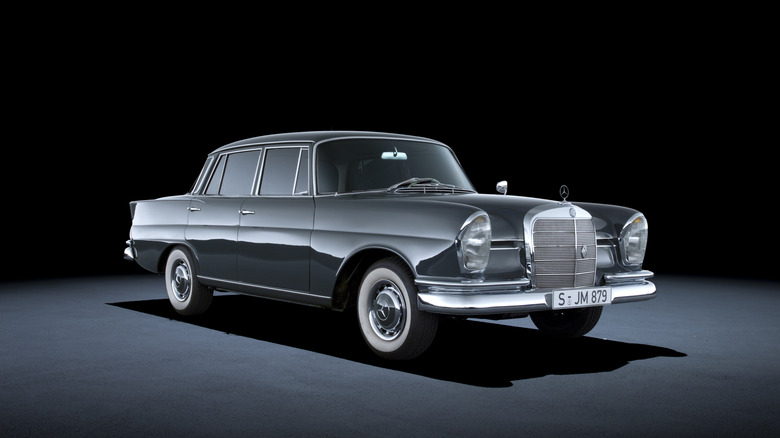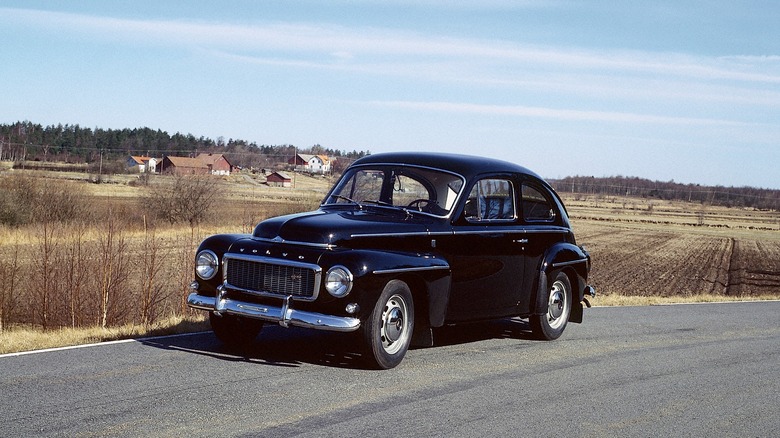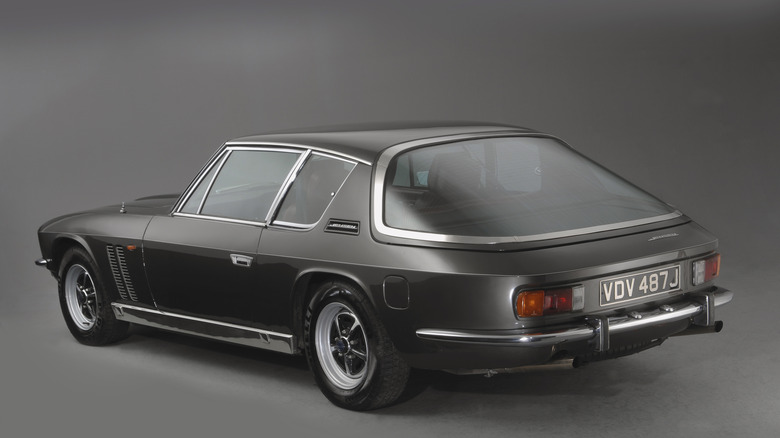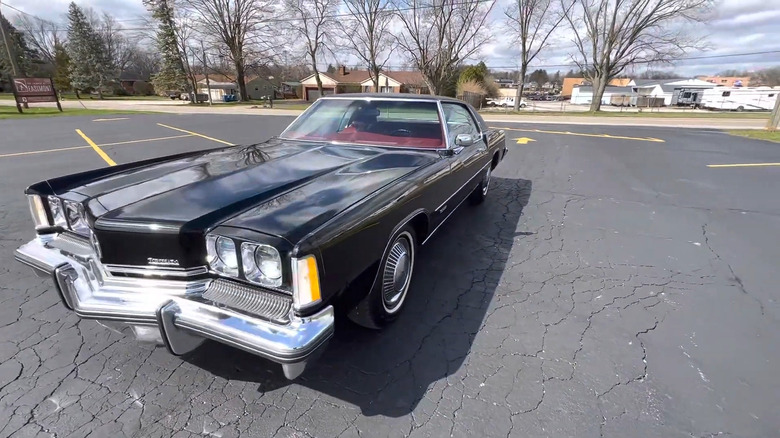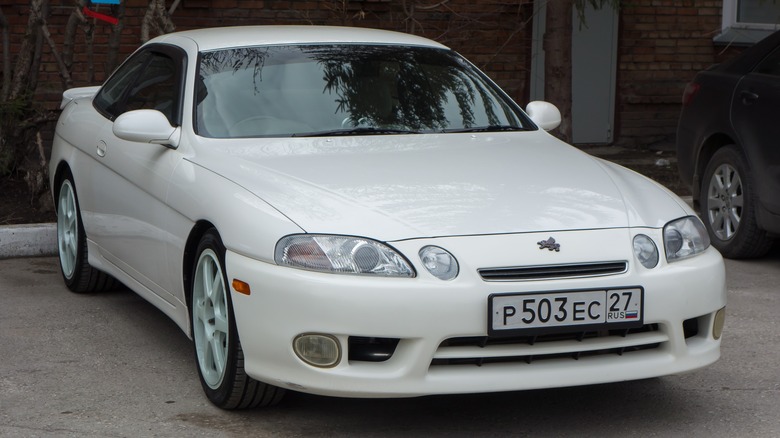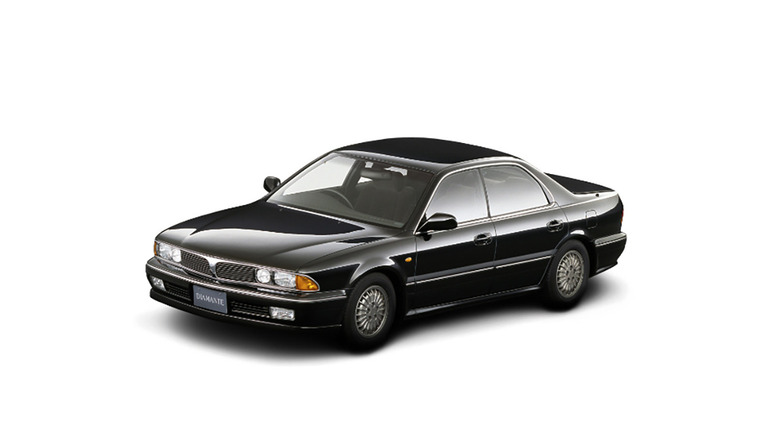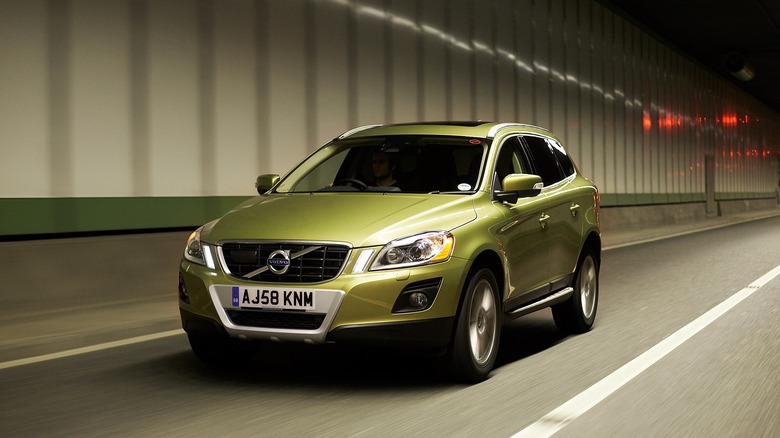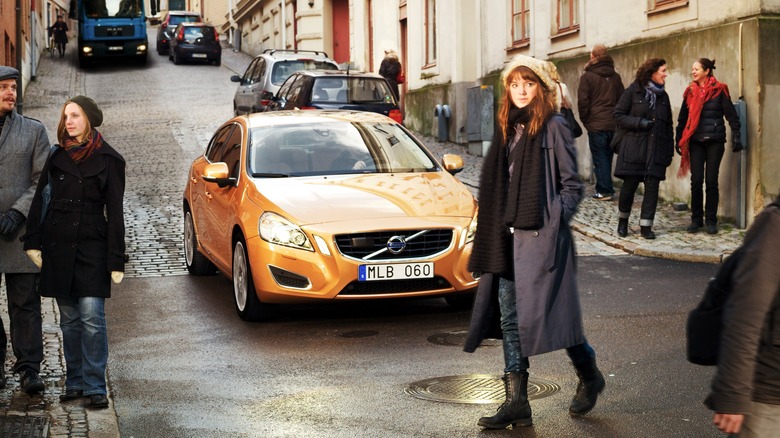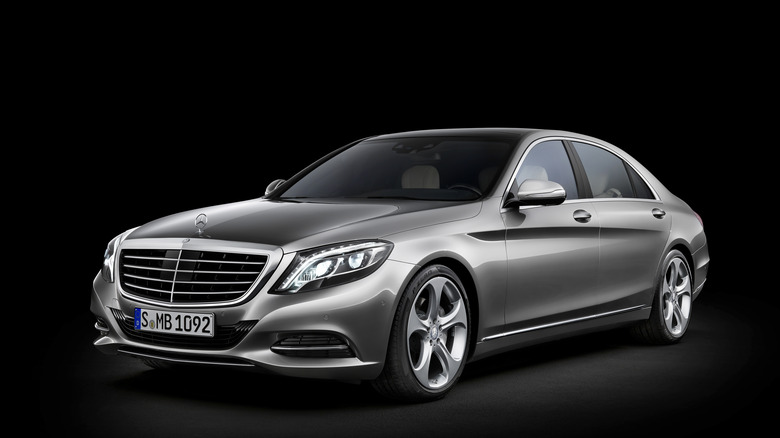10 Cars That Revolutionized Automotive Safety Forever
Cars today are safety marvels. With numerous active and passive safety features onboard, they feature a safety net that would have been unthinkable a few decades ago. They can keep up with traffic, even when you don't pay close attention to the road ahead, and even brake if they detect a road hazard. These days its hard for amateur drivers to even skid their vehicles, thanks to a plethora of stability systems.
If an accident happens, passive safety features minimize injuries and potential fatalities. The seatbelt alone reduces the risk of fatality by 45% in regular cars and 60% in light trucks. To get to this point, we have to thank various automakers who worked hard to make their models safer and outshine their rivals. Ultimately, though, this concerted effort of the automotive industry led to ever safer cars and fewer road fatalities.
Let's take a closer look at all the car models that pioneered safety features, tell their stories, and dig into some of the engineering behind their groundbreaking developments. So, from crumple zones to autonomous safety features, here are the cars that revolutionized automotive safety forever!
1959 Mercedes-Benz W111/W112 – Crumple zones
Crumple zones are a part of every new vehicle sold today and have been a staple in the industry for decades. In brief, they are deformable parts in the front and rear of the car that absorb the impact during collision while keeping the passenger area intact. Moreover, by absorbing the impact, the crumple zones reduce the force transferred to the passengers, thus minimizing injuries.
The first to ponder the idea of crumple zones as a passive safety feature was Béla Barényi, an engineer from Austria-Hungary who worked for Mercedes-Benz. In 1953, he proposed the feature, and some of it even found its way into the 1953 W120/W121 Ponton, one of the most successful models in Mercedes-Benz's history. However, the first model that was designed from the ground up with crumple zones in mind was Ponton's successor, the W111/W112 Fintail.
Mercedes' executive offering at the time featured front and back crumple zones, but engineers also implemented other features to make it the safest vehicle of its era. The Fintail had a padded dashboard with recessed controls and a steering wheel with upholstered plate. There was even a wedge-pin door lock mechanism, which ensured the doors wouldn't open in an accident while still allowing the passengers to easily open them afterward.
However, the Fintail was not just about safety. It was also a very luxurious sedan, with deluxe features like air conditioning, an automatic gearbox, power steering, and even power windows.
1959 Volvo PV544 – Three-point seatbelt
The three-point safety belt was arguably the most important passive automotive safety invention, and it was first implemented in the 1959 Volvo PV544. The man behind this invention is Nils Bohlin, who worked as an engineer at Volvo during the 1950s. Without it, during a hard collision, passengers ricocheted inside the cabin, and in many cases, they were ejected from the vehicle. Moreover, the three-point seatbelt spreads the crash forces across the stronger bones on the body, minimizing injuries.
Seatbelts were used in cars well before, but they were either two-point lap belts or three-point safety belts that weren't very effective during hard collisions. Bohlin's system was comfortable, easy to apply, and kept the passengers in their seats during a collision. Although it consists of only one belt, once put in place, Volvo's seatbelt acted as a lap belt and a diagonal torso belt, anchored in three points. And the best part — the three-point seatbelt was an open patent, meaning every other company could use it at no additional cost.
Volvo delivered the first PV544 with three-point seatbelts in 1959 to a dealer in Kristianstad, Sweden. The two-door saloon also featured a padded upper dashboard, much like the Mercedes-Benz Fintail, in an effort to improve crash safety. However, the three-point safety belt was also available on the 1959 Amazon four-door sedan and soon implemented in most of the brand's offerings.
1966 Jensen FF – Anti-lock braking system
The anti-lock braking system (ABS) is arguably the most important active safety feature in modern vehicles. It works by preventing wheel lockup, allowing the driver to steer during emergency braking. Today, ABS is a standard feature on every new vehicle, though it wasn't until the 1970s that it started appearing commonly. The first ABS appeared in an unlikely car that you've probably never heard of — the 1966 Jensen FF.
British automaker Jensen Motors made some very cool classic cars since its inception in 1934, and the FF was probably its crown jewel. The grand tourer was far ahead of its time, with looks and performance to match. It had a Chrysler-sourced 6.3-liter V8 under the bonnet, producing 330 hp and 425 lb-ft of torque, but that wasn't the highlight of the FF — it was the AWD system with 37:63 torque split. Yup, this car preceded the Audi Quattro by 15 years as the first non-off-roader with four driven wheels. And the FF also beat Mercedes-Benz to the punch with ABS.
Unfortunately, all these technologies ultimately made the Jensen FF very complex to produce, and the car was not a sales success. The ABS system was a hydraulic one, similar to Dunlop's Maxaret system used in aviation, not an electronic one like the modern system used today. It worked, but it added complexity to an already intricate vehicle, making it a reliability nightmare.
1973 Oldsmobile Toronado – Airbags
Unlike most other entries on this list, the airbag wasn't an outright success, despite being one of the most important safety features ever invented. It was patented by inventor and entrepreneur Allen Breed in 1968 and was an electromechanical system with sensors, much like the modern airbag. General Motors liked the idea and implemented a driver's side airbag in a fleet of 1,000 Chevy Impala cars in 1973, though they were only intended for government use.
Interestingly, GM used an Oldsmobile dash in those Impalas, particularly from the 1973 Toronado. And soon after, the 1973 Toronado became the first car equipped with an airbag available to the public. GM marketed the feature as the "Air Cushion Restraint System," and it soon became available in Cadillac models as well. However, buyers weren't interested, and due to a lack of demand, GM stopped offering cars with ACSR in 1977. Not only that, but GM and Ford even lobbied against new safety laws requiring airbags in the U.S., saying they were not a viable solution.
Fortunately, automakers across the pond were also busy implementing airbags in their models. In 1981, Mercedes-Benz offered two front airbags for the driver and passenger in the S-Class, accompanied by belt tensioners. However, the German automaker used a slightly different design, patented by Mercedes-Benz in 1971, following a 1961 patent from Walter Linderer, which didn't implement sensors. Subsequently, most other automakers started implementing the supplemental restraint system(SRS) airbag system, which soon became a staple in the industry.
1991 Toyota Soarer – Backup camera
Japanese automakers are not often praised as safety pioneers, but they have always worked on advanced features concurrently with European and American automakers. Toyota, has often been at the forefront of innovation, as evident with the 1991 Soarer, the first-ever production car equipped with a backup camera. Although we today see it as an added convenience, backup cameras are important in reducing the risk of children being run over when reversing. For that reason, backup cameras have been required by law in the U.S. and Canada since 2018.
The JDM-only Soarer was a technological tour de force developed in an era when Toyota was shaking up the industry with many innovations. Equipped with either the 1JZ-GTE, 2.5-liter twin-turbo engine, which became a tuner's dream, or the legendary 1UZ-FE 4.0-liter V8 engine, the Soarer was the company's flagship coupe offering. It also had four-wheel-steering, an electronically controlled air suspension, and even Toyota's novel Electro-Multivision map navigation system with GPS. Sadly, most of those features, including the backup camera, weren't available in the first-gen Lexus SC, which was the American/European version of the Soarer.
However, backup cameras were invented way before Toyota pushed them into the mainstream. General Motors showed a backup camera feature in the 1956 Buick Centurion concept car, consisting of a TV camera nicely integrated into the back and a CRT screen inside. Volvo also dabbled with the feature in the 1972 Experimental Safety Car. Yet, it took until 2002 for the rear-view camera to appear in America with the Infiniti Q45.
1995 Mercedes-Benz S 600 Coupe – Electronic stability program
The electronic stability program (ESP) feature works in much the same way as ABS, only it constantly monitors whether the vehicle skids and acts to keep it in line. It's a crucial active safety feature of every new vehicle, allowing even amateur drivers to make an evasive maneuver without losing control. Moreover, by adjusting the torque and applying the brakes, ESP can keep the vehicle in the desired line during rainy and snowy conditions.
ESP was the brainchild of Mercedes-Benz engineer Frank Werner-Mohn, who developed the solution after he had an accident testing the W124 E-Class where the car lost control on an icy road. Coincidentally, auto supplier Bosch was also working on the same problem, and after a few meetings, the two companies agreed on developing the system further together. The first fruit of that collaboration appeared in the 1995 S 600 Coupe, officially the first production car with ESP.
Just a few months later, Toyota launched its own skid-control solution in the JDM-only 1995 Crown Majesta — the same vehicle as the Lexus LS in other markets. The Japanese automaker named its solution vehicle stability control (VSC) and developed it with auto suppliers Aisin and Denso. Soon, most of the industry followed suit. Still, the feature became prominent after the first-gen A-Class failed the moose test on a journalist test in Denmark, forcing Mercedes-Benz to equip its entry-level model with ESP as standard.
1995 Mitsubishi Diamante – Adaptive cruise control
Many people would think of adaptive cruise control (ACC) as just a convenient feature, but it has its safety merits. Driving on the highway can be boring, so people tend to get distracted, yet even a brief lapse in concentration at those velocities can lead to catastrophic consequences. An ACC feature greatly reduces the likelihood of an accident by monitoring the road ahead and adjusting the vehicle's speed.
What will probably surprise most is that Mitsubishi was the first to implement such a feature in its 1995 Diamante mid-size sedan. Called "Preview Distance Control," this system used lidar sensors to map the road ahead and adjust the speed accordingly. This was not the first time Mitsubishi used lidar; in the 1992 Debonair sedan, the company used it to warn the driver of a possible collision. Although the system in the 1995 Diamante was more advanced, it was still rudimentary compared to modern ones, as it could only reduce the throttle or change down a gear — it never used the brakes. It also only worked at speeds up to 67 mph and wasn't particularly useful in the rain. As such, it was only available in Japan at the time.
Still, it wasn't long until a system that engaged the brakes appeared in the 1998 Mercedes-Benz S-Class W220. Called Active Distance Assist DISTRONIC, Mercedes' radar-based system worked between 25 mph and 100 mph, similar to most modern adaptive cruise control systems.
2008 Volvo XC60 – Collision avoidance system
The collision avoidance system (CAS) might seem similar to an ACC system, but CAS monitors the road even without cruise control engaged, and either warns the driver of a road hazard or engages the brakes to stop the car. These systems are widely used in cars today, but the first model to be equipped with one is the 2008 Volvo XC60.
Volvo's system at the time was quite primitive compared to modern a CAS, as it was only viable in urban driving scenarios and at lower speeds. Called "City Safety," the system was able to completely avoid a collision at speeds up to 10 mph and greatly reduce the impact at speeds between 10 mph and 20 mph. Still, before engaging the brakes, the system first warned the driver audibly and visually via a red light on the dashboard. If the driver reacted and engaged the brakes, it would help by boosting the brake pressure. In the event the driver didn't react, it would apply full braking force. City Safety utilized a laser in the windscreen rather than radars and continually observed for potential hazards between 19 and 26 feet ahead.
Soon after launching the system in the XC60, Volvo made it available on the 2008 V70, XC70, and S80 as part of a package that also included adaptive cruise control, distance alert, driver alert control, and lane departure warning.
2010 Volvo S60 – Pedestrian detection with full auto brake
Another of Volvo's big milestones in safety was the pedestrian detection system, available in the 2010 S60, an evolution of collision avoidance technology. Pedestrians often get the short end of the stick despite numerous advancements in passive safety technology, like front deformation zones and pop-up engine hoods. Thus, an active system to reduce crashing into pedestrians is a much-preferred solution.
Volvo's pioneering pedestrian detection system with full auto brake technology could detect people crossing the road using radar and a camera integrated into the top of the windshield. Not only that, but it could also tell whether a pedestrian is about to cross the road. Namely, the front radar has a wider field of view, meaning it could notice people on the sidewalk, while the high-resolution camera could detect patterns of movement. Adding to the technology's sophistication was the ability to detect people as short as 1 foot, 8 inches tall.
Like Volvo's collision detection system, when the pedestrian detection technology notices a pedestrian, it sounds an audible warning and flashes a red light on the instrument panel. If the driver doesn't react, the system can fully take over and apply full braking force. Most modern cars have active pedestrian safety systems that work in the same way, though fortified with bicycle and motorcycle detection.
2014 Mercedes-Benz S-Class – Autonomous driving
It has been 10 years since Mercedes-Benz launched the first car with autonomous driving features. Yup, it didn't start with Tesla, despite the company offering a feature named Full Self-Driving (which is still just a driver assistance system, by the way). We are still nowhere near full self-driving, and some experts say the feature has hit a troubling plateau. However, that is not to say you can't relax and do something else with your hands on long drives, as many modern luxury cars offer an autopilot assistance feature that works on the highway.
The first Mercedes-Benz to receive the feature was the S-Class. Named the "Distronic Plus Steering Assistance System," this technology was the first to introduce steering to the equation. The system could guide itself according to the white lane markings at speeds up to 124 mph. The only real caveat was that the driver needed to keep at least one hand on the steering wheel. A bummer, sure, but the technology still wasn't ready for full autonomy. As we learned from Tesla drivers, such systems could be easily tricked by hanging a weight on the steering wheel, but we certainly don't recommend that.
Still, the Mercedes luxury sedan equipped with this tech could follow cars in front, stop down to a halt, and then continue with the traffic flow, contributing to a much more comfortable ride. To do that, Mercedes-Benz equipped the S-Class with six radars, 12 ultrasonic sensors, a stereoscopic camera, and four additional regular cameras that allowed for 360-degree monitoring.
